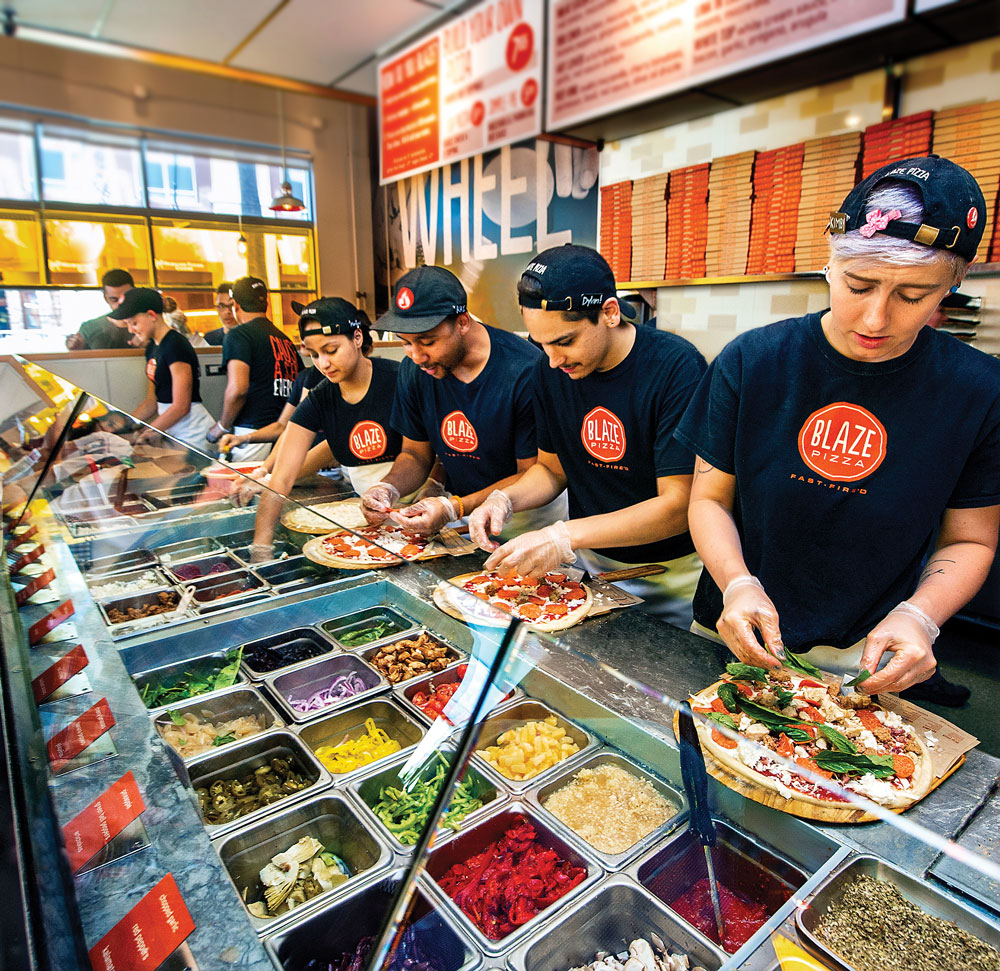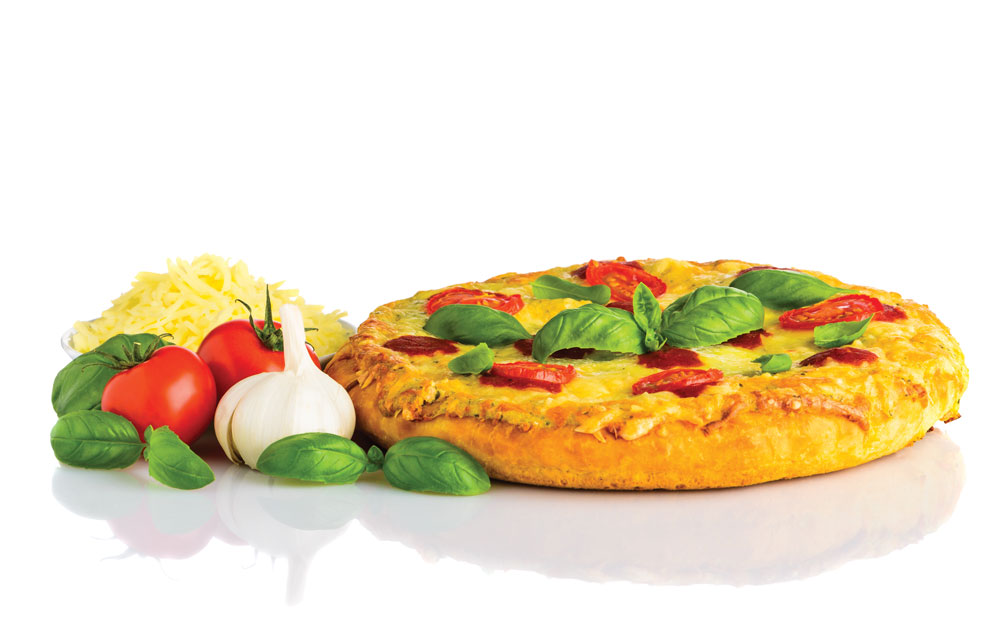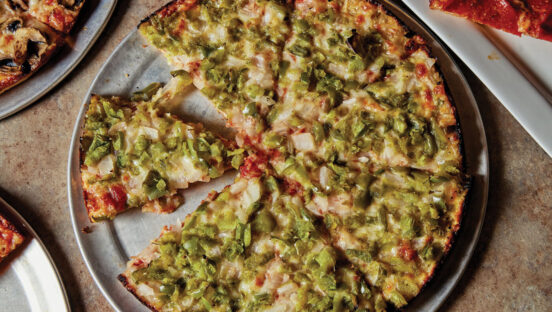Though clean ingredients have made headlines in recent years, chef Brad Kent from Pasadena, California-based Blaze Pizza notes that the movement has been mounting for decades. After retail giants Trader Joe’s and Whole Foods started gaining traction in the late ’90s, he says, bigger names like Costco (now the largest retail organics food purchaser) jumped onboard.
“These major brands played influential roles in making GMOs and ‘clean label’ ingredients household considerations in food choices, and the trend carried over into restaurants in the early 2000s as chefs transitioned from roles in fine dining to more everyday foods,” Kent explains. “That gave birth to fast-casual, and the larger legacy players took notice in the 2010s. The national and international trend of clean foods is ever-growing and now used by the largest restaurant chains as talking points on their menus.”
So should you consider coming clean in your operation? Here, experts look at the definition of “clean ingredients” and explain how to tidy up your menu—and successfully market this strategic move.
 |
Living Up to Customers’ ExpectationsFrom Kellogg’s and Campbell’s Soup to Papa John’s, food companies have been cleaning up their ingredients list over the past several years—and with good reason. More and more customers expect it. A November 2017 study by Innova Marketing Insights found that more consumers are looking for the “clean” label in their food choices. According to the study, seven out of 10 consumers want to know and understand the ingredient list. And 91% of U.S. consumers believe food options with recognizable ingredients are better for them. |
What Does Clean Mean?
Leo Spizzirri, maestro instruttore at North American Pizza & Culinary Academy in Lisle, Illinois, notes that clean label ingredients are usually “free-from,” minimally processed, simple, and sometimes organic or gluten-free (however, not every gluten-free product is considered clean). “Clean label ingredients were once referred to as ‘grandma’s pantry’ ingredients—if your grandma would have had it in her house, it most likely was a simple, clean ingredient,” Spizzirri says. “She probably wouldn’t have had anything with unpronounceable ingredients.”
Spizzirri explains that as consumer awareness about unacceptable ingredients rose, the manufacturing industry followed, and today, almost every major food manufacturer in the United States follows some list of acceptable ingredients. Meanwhile, ingredients that are deemed no longer safe or potentially hazardous to health get put on a watchlist for further study. “One example of a questionable ingredient used in pizza dough is L-cysteine, commonly used as a dough conditioner, which relaxes dough and makes it more extensible,” Spizzirri says. “L-cysteine has two ways it can be sourced: from duck feathers or human hair. A lot of manufacturers will allow L-cysteine to be used if it comes from feathers, but it’s often rejected when it’s sourced from hair. Even though this ingredient is naturally occurring, it’s sometimes frowned upon by manufacturers.”
— Brad Kent, Blaze Pizza
What else is a no-no in the world of clean ingredients? Kent recommends avoiding ingredients that start with “artificial” and those that end in “-ite” or “-ate”—an easy way to identify chemical additives, which are usually added to help hold water for cost reduction, maintain color and act as preservatives. Meanwhile, Spizzirri refers to the Whole Foods list of acceptability (find it at gocleanlabel.com/whole-foods-clean-label-list), but generally he stays away from ingredients with artificial colors or flavors as well as products with BHA (butylated hydroxyanisole), BHT (butylated hydroxytoluene), bleached or bromate flour, hydrogenated fats and MSG.
Linda Balles, marketing specialist for Colony Foods in Lawrence, Massachusetts, recommends non-GMO and organic foods and avoiding ingredients like nitrates (found in deli meats), fillers, extenders and artificial coloring. “The demand for clean foods is definitely growing—perhaps even still on the cusp of arrival, especially as so many people develop allergies later in life because they’ve eaten too many processed foods over the years,” Balles says.
“Unfortunately, there will probably always be a market for highly processed foods, but the Internet and social media have made knowing what’s in your foods and where your foods come from important,” Kent agrees. “It’s not [just] a trend. I believe we’ll see only more emphasis on natural and clean ingredients as time goes on.”
 |
|
Blaze Pizza allows customers to view its carefully sourced ingredients as they move down the make line. The chain also emphasizes transparency by telling the story behind the ingredients via smartly placed marketing materials. Photo courtesy Blaze Pizza. |
Purchasing Power

The Clean Generations |
|
According to 2017 research by Nielsen, millennials and Generation X consumers are more likely to seek out and buy food products that are labeled organic, GMO-free and hormone-free. “Demographic groups influencing the forward movement of this trend include consumers under the age of 35, those with annual household incomes over $100,000 and families with children,” the company reports. “The bottom line is that transparency and clean label are not point-in-time fads. They have gone mainstream, and competition for consumers seeking clarity, purity and responsibility is going to continue to increase.” |
Must you buy locally to get cleaner ingredients? Not necessarily. While Kent believes that vertical farming techniques will make uber-localization possible as the industry further develops, right now they’re not a national practice. So, for Blaze’s nationwide locations, clean ingredients still have to be transported from growing regions to consumers. You simply need to do your homework to find the right products. “Distributors may not have the best insights to what they sell; they’re simply the organizations that move products from here to there,” Kent explains. “The best idea would be to have an in-house supply chain leader and strong culinary and quality assurance personnel that can make sure you know your products from their source and have a very good, trusting relationship with those supplier-vendors.”
Still, Spizzirri says a reputable food or ingredient supplier will be able to provide you with a spec and ingredient statement for every item they carry. Once you have these specs, you can compare them to some of the major lists of acceptable ingredients to see if they truly are clean. Balles stresses that her company maintains a robust line of clean products—the first step is simply asking your distributor for those options.
And the more restaurants request those kinds of items, the larger the movement grows. “We’re seeing more and more of the big guys partnering with small farms to offer cleaner ingredients to their clients, and I’m seeing more and more distributors offer a ‘local list,’” says Edwin Molina, executive chef at Atlanta-based Double Zero. “Those guys are starting to get behind the movement as well, and I think as long as you’re shopping educated, you should be able to decipher what to avoid.” For example, he asks distributors the following questions: Where was this grown? Who grew/raised it? How was it slaughtered? Is it organic and/or sustainable? Were any antibiotics or pesticides used? If so, which ones?
When using cleaner ingredients, will your food costs go up? Perhaps—but not necessarily, says Kent. “Understanding how to maximize yields of products through better processes and recipes can help mitigate the cost impact of better quality ingredients,” he explains. “And having good in-house procurement, culinary and quality assurance can help minimize those impacts.”
Even if clean label ingredients do cost more, Spizzirri believes that most consumers looking for clean products expect to pay more. “There isn’t a set rule on clean ingredients costing more,” he adds. “The factor that drives the cost of these ingredients is their availability in the marketplace, so common ingredients that are clean can easily have the same price as other ingredients.” Spizzirri recommends controlling costs by simply sourcing fresh meats and produce, avoiding processed or premixed items, and seeking minimal ingredients on labels.
— Linda Balles, Colony Foods

Photo courtesy Double Zero
Promoting Your Clean-Sweep Changes
If you do have to raise prices, you can minimize the sting through some proper marketing and customer education. “I like to show customers that I have their best interest in mind, and if the ‘better for you’ message can be conveyed to the customer, a trust is created,” Spizzirri says. “First, mention cleaner ingredients on your menu or in-store displays. If you change to a cleaner ingredient, train your staff on that change. Explain the difference between the old and new items to your employees. Customer interaction will bring up opportunities to discuss these better ingredients and menu improvements.”
Indeed, at Double Zero, staff education remains key—especially if costs are affected. “Employees can then educate the guest in what they are eating and why it may cost more than the guys next door,” Molina explains. “We simply spend a lot of time talking about any new product, farm, fishmonger, etc., when we feature them so that our staff is as knowledgeable about it as I am. This gives them confidence and pride in the product they’re promoting on the floor.”
Blaze Pizza also leverages multiple platforms of communication to help educate guests on its quest to provide clean ingredients with no artificial colors, flavors or preservatives. In-restaurant, marketing campaigns and merchandising help bring guests along a journey as they move down the make line. “On social media and through public relations, we tell our story on a broader scale to showcase our commitment,” says Blaze Pizza CMO Shivram Vaideeswaran. “And, more intimately, the brand has hosted influencer events with Chef Kent to help explain why we’ve chosen each ingredient on the line and where it comes from.”
Finally, don’t forget to piggyback off the efforts of big-name brands. When Panera Bread touted its “100% clean” menu in early 2017, the catchword once again went mainstream—and Balles notes that these marketing campaigns offer cheap advertising for independents. “It’s like a subliminal suggestion; people already have it on their minds,” she says. “The most important thing is to advertise clean products to your own customers, talking up the value of the product and why you’re choosing one over another. Clean ingredients won’t be for every operation, but they’re great for conscientious independents who want to make their menu better and keep things fresh—without even having to change any recipes!”















